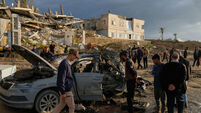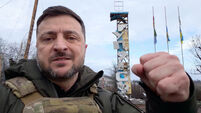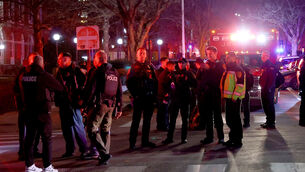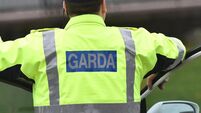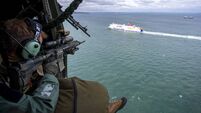Five feared dead as Burmese Junta attacks protesters
Up to five people were feared dead tonight after Burma’s ruthless military government ordered troops to open fire on crowds of demonstrators.
On the ninth day of huge street protests in Rangoon despite an official ban, the junta resorted to violence having poured troops into the city centre overnight.
Witnesses said Buddhist monks, who have been leading the anti-government marches, were among the dead.
Hundreds of others were hit with tear gas, beaten and dragged away under arrest in convoys of trucks.
The UN Security council is to meet to discuss the situation tonight after the violence was condemned by the EU and the US who called on the Burma’s rulers to stop the violence and open talks with pro-democracy leaders.
An official statement from the junta admitted its security forces fired on demonstrators killing one man. But dissident groups reported as many as five dead, including monks and more than 300 arrests.
The government’s announcement on state radio and television was the first admission that force has been used to suppress the protests.
It said the security forces fired after the crowd of 10,000 people, including “so-called monks,” failed to disperse at Rangoon’s Sule Pagoda. It said the police used “minimum force”.
Zin Linn, information minister for the Washington-based National Coalition Government of the Union of Burma, which is Burma’s self-styled government-in-exile, said at least five monks were killed, while an organisation of exiled political activists in Thailand, the National League for Democracy-Liberated Area said three monks had been confirmed dead, and about 17 wounded.
Exiled Burma media reported similar figures.
Kim Maung Win, deputy editor of the Democratic Voice of Burma, said eight people – five monks and three civilians – were reported killed in the conflict and at least four seriously injured.
“If these stories are accurate, the US is very troubled that the regime would treat the Burmese people this way,” said National Security Council spokesman Gordon Johndroe said in Washington.
“We call on the junta to proceed in a peaceful transition to democracy.”
The junta had banned all public gatherings of more than five people and imposed a night-time curfew following eight days of anti-government marches led by monks across the country in the largest protests in nearly 20 years.
As the ninth consecutive day of unrest began, about 10,000 monks and students along with members of Nobel laureate Aung San Suu Kyi’s pro-democracy party set off from the golden hilltop Shwedagon Pagoda to the Sule Pagoda in the heart of Rangoon, but were blocked by military trucks along the route.
Other marchers fanned out into downtown streets with armed security forces attempting to disperse them.
“They will kill us, monks and nuns. Maybe we should go back to normal life as before,” said one young nun. But a student at a roadside watching the arrival of the demonstrators said, “If they are brave, we must be brave. They risk their lives for us.”
Other protesters carried flags emblazoned with the fighting peacock, a key symbol of the democracy movement in Burma.
Burma’s leaders warned monks to stop the protests after some 100,000 people joined marches in Rangoon on Monday in the largest anti-government demonstrations since a 1988 pro-democracy uprising was put down by troops who killed 3,000 people.
The demonstrations started last month after the government raised fuel prices sharply in what is one of Asia’s poorest countries.
But they are also a manifestation of deep-rooted dissatisfaction with the repressive military rule that has gripped the country since 1962.
If the military responds to new protests with force, it would almost certainly put pressure on Burma’s top economic and diplomatic supporter, China, which is eager to polish its international image before next year’s Olympics in Beijing.







